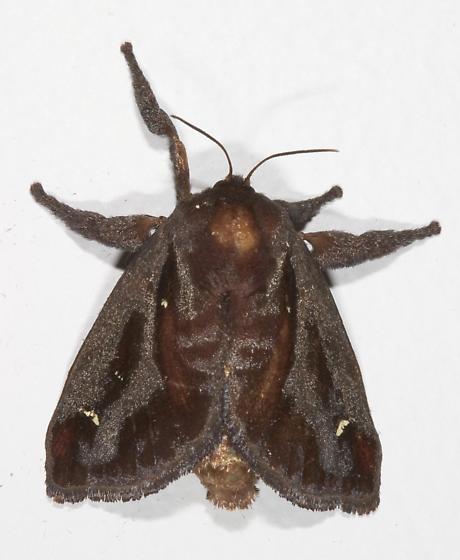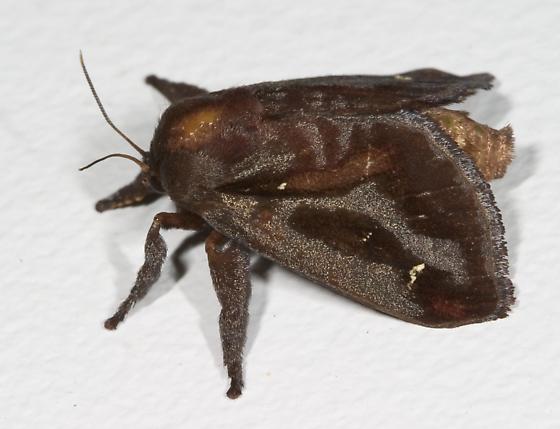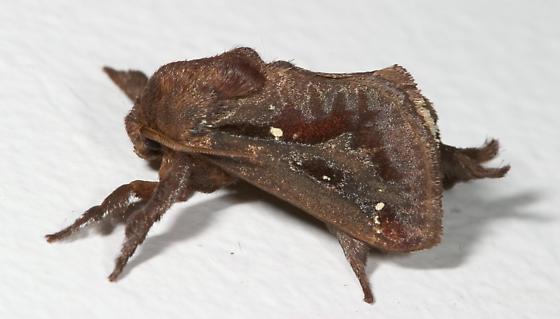Saddleback Caterpillar
|
adult; Photo © Troy Bartlett, BugGuide |
|
adult female; Photo © Troy Bartlett, BugGuide |
|
adult male; Photo © Troy Bartlett, BugGuide |
|
larva; Photo © Troy Bartlett, BugGuide |
|
larva; Photo by Herbert A. "Joe" Pase III, Texas Forest Service, www.insectimages.org |
|
larva; Photo by Gerald J. Lenhard, Lousiana State University, www.insectimages.org |
Scientific name
Acharia stimulea (Clemens)
Family
Limacodidae
Synonyms
Sibine stimulea (Clemens)
Description
Adults: Wingspan 3.8-6.5 cm (female larger than male); forewings dark brown to charcoal in color with white spots; hindwings without markings; male with flared abdomen; male antennae bipectinatebipectinate:
feathery, with branches coming out of both sides of the main axis (generally applied to antennae)
on basalbasal:
at the base of a structure
half only, female antennae threadlike.
Eggs: Dorsoventrally flat and thin; highly transparent.
Larvae: Length 25 mm; two spine-bearing lobes at each end of the body; central dorsum with large green saddle-like patch containing a brown patch bordered with white; spine clusters line each side.
Pupae: Thick and robust enclosed in a hard ovoid cocoon with a trapdoor exit.
Diagnostic features
Adult: Subtle forewing markings with white spots.
Larvae: Two spine-bearing lobes at each end of the body, with a color patch appearing like a "saddle" on the central dorsum. The green saddle has a brown patch and is bordered with white ring. Family is characterized by the retracted larval head beneath the prothoracic segment and the reduction of thoracic legs and prolegs.
Distribution
Eastern North America.
Hosts
Palms: Include the genera Adonidia, Archontophoenix, Caryota, Chamaedorea, Cocos, Dictyosperma, Dypsis, Nannorrhops, Phoenix, and Washingtonia
Other: oak, maple, elm, willow, beech, hickory, and various shrubs, including hibiscus and rose
Additional comments
Two other species of Acharia, A. fusca and A. nesea, are pests of oil palms (Elaeis sp.) in South America.
In the northern part of the range, A. stimulea adults are seen June to August and larvae are seen July to October. In the southern part of the range, several generations occur per year and can be seen year-round.
In Florida, this species seems to prefer exotic species of palms rather than native species, with the exception of the Cuban royal palm (Roystonea regia). It also tends to prefer species with relatively tender leaves.
Acharia stimulea larvae have urticatingurticating:
stinging
setae that can cause minor but painful injury.








